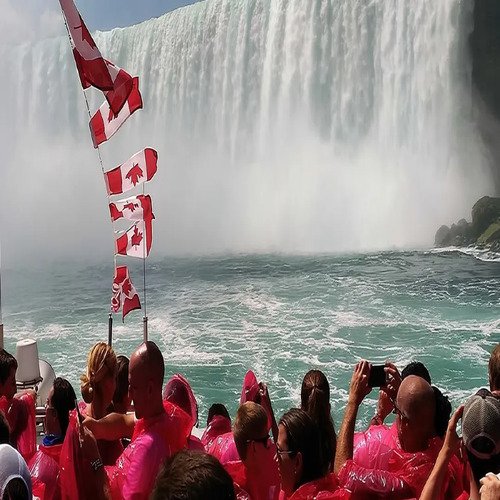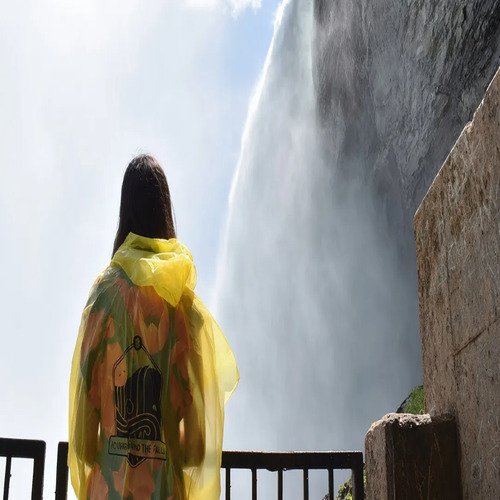OVERVIEW
When winter descends on Canada, few places transform as beautifully as Niagara Falls. The roaring water turns to misty ice sculptures, the landscape glows under soft snow, and the falls take on a magical stillness that captivates every visitor. A Niagara Falls winter tour isn’t just a trip — it’s an experience where nature shows both its strength and serenity in one breathtaking moment.
In this guide, we’ll explore what makes Niagara Falls Tours Canada so special during the winter season. From weather and viewing points to activities, photography tips, and safety guidelines — here’s everything you need to know for an unforgettable Niagara Falls Tours visit.
1. Why Visit Niagara Falls in Winter – Experience the Magic with Niagara Falls Tours Canada?
Many travelers think of Niagara Falls Tours Canada as a summer experience, but winter unveils an entirely different kind of beauty. The icy mist, frozen railings, and snow-covered trees transform the landscape into a breathtaking masterpiece — a scene that feels straight out of a winter painting.
During this season, the falls don’t stop — they continue to flow beneath a delicate layer of frost, making the sight even more mesmerizing. And because there are fewer crowds, winter brings a peaceful atmosphere that allows you to truly take in the power and calm of the natural world.
Additionally, local paths and viewpoints are easier to explore at your own pace. The cold air feels fresh and energizing, and with the right preparation, the winter chill becomes part of the adventure rather than a challenge.
2. The Beauty of the Canadian Side
The Niagara Falls Tours Canada experience captures the most breathtaking views of the falls, offering an unmatched panorama of all three waterfalls — Horseshoe, American, and Bridal Veil Falls. From the Canadian side, travelers can witness the full grandeur of Niagara’s power and beauty in one sweeping sight.
Top attractions include Table Rock Welcome Centre, where visitors can stand just steps away from the cascading Horseshoe Falls, and Journey Behind the Falls, which offers a thrilling close-up from tunnels carved through bedrock. The Niagara SkyWheel and Skylon Tower add another dimension, providing stunning aerial views, especially during sunset or illumination hours.
What makes the Canadian side special is its perfect blend of natural wonder and modern comfort. With well-designed walkways, gardens, and entertainment areas, Niagara Falls Tours Canada offers a seamless mix of adventure, relaxation, and unforgettable scenic beauty.
3. What to Expect from the Weather
Winter at Niagara Falls usually runs from December to early March. Temperatures can drop below freezing, often ranging from -5°C to -10°C (23°F to 14°F). While this might sound extreme, it’s manageable with warm clothing and smart preparation.
The snow and mist can create slippery conditions, so waterproof boots with good grip are essential. Layer your clothes — wear thermal undergarments, a warm jacket, gloves, and a hat. Keep a scarf or face covering handy for the mist.
On sunny days, the sunlight reflecting off the ice can be dazzling, so sunglasses are surprisingly useful even in winter.

4. Exploring the Top Winter Attractions
Even in the colder months, several attractions remain open for visitors who wish to explore. Let’s look at the highlights on the U.S. side.
a. Niagara Falls State Park
As the oldest state park in the United States, Niagara Falls State Park remains open year-round. The walkways are maintained during the winter, and the snow-covered scenery looks magical. This park offers several observation points, such as Terrapin Point and Prospect Point, both of which give excellent winter views.
b. Observation Tower
The Niagara Falls Observation Tower extends over the gorge and allows you to stand almost directly above the rushing water. In winter, the view becomes surreal — mist crystals sparkle in the sunlight, and you can even see sections of ice forming along the riverbanks.
c. Niagara Gorge Trails
For those who enjoy gentle walks, the Niagara Gorge offers scenic winter trails. While some paths may close for safety, sections near the river remain open for hiking or photography. The frozen cliffs and snow-dusted trees make it a perfect setting for peaceful reflection.
d. Illuminations at Night
Each evening, powerful colored lights illuminate the falls, creating a breathtaking contrast against the snowy landscape. The Winter Festival of Lights, visible from both sides, adds to the charm — shimmering blues, purples, and golds reflect on the frozen mist like a living painting.
5. Niagara Falls Tours Canada: Photography Tips for Winter Visitors
Photographing Niagara Falls in winter can be both challenging and rewarding. The light changes quickly, and the cold can affect your camera equipment. Here are a few helpful tips:
- Use gloves with touchscreen fingertips so you can adjust camera settings without freezing your hands.
- Protect your lens from mist using a microfiber cloth or a waterproof cover.
- Capture reflections — the sunlight on ice and snow creates unique color tones.
- Take photos during golden hours (early morning or just before sunset) for soft, natural lighting.
- Don’t forget night shots — the illuminated falls under a snowy sky create unforgettable images.
6. Simple Safety and Comfort Tips
To fully enjoy your visit, a few basic precautions go a long way:
- Check weather updates before you head out, as snowstorms can temporarily close paths.
- Stay within marked areas — frozen surfaces near the edge can be slippery and dangerous.
- Carry a small thermos of warm tea or coffee to stay comfortable during long walks.
- Plan restroom stops ahead of time since some facilities may have limited winter hours.
- Bring extra socks — your feet can get cold faster than you expect.
These small steps help ensure that your visit remains safe, warm, and enjoyable.

7. Niagara Falls Tours Canada: What to Do Nearby (Without Paid Activities)
While winter limits some attractions, it opens new ways to appreciate the area’s natural and cultural beauty.
You can walk through Niagara Falls State Park’s Discovery Center, where educational exhibits explain how glaciers formed the falls thousands of years ago. Some viewpoints include interpretive signs that tell the story of early explorers who first mapped this mighty river.
Additionally, many visitors enjoy quiet time near the Niagara River itself. Watching the partially frozen water flow steadily under a blanket of mist gives a sense of timelessness — a reminder that nature’s rhythms continue, no matter the season.
8. Ideal Time of Day to Visit
Winter days are shorter, so planning your visit around daylight hours helps maximize your experience. Mornings are best for crisp air and fewer people, while late afternoons offer warm sunlight perfect for photography.
Evenings, however, bring a different kind of wonder. As twilight sets in, the glowing lights of the falls and the soft snowfall create a dreamlike atmosphere that feels almost magical.
For the best of both worlds, arrive before noon, explore the park through the afternoon, and then stay to watch the illumination show after sunset.
9. Accessibility for All Visitors
Niagara Falls is known for being welcoming to everyone, including those with mobility challenges. Many of the walkways and viewing platforms on the Canadian side are wheelchair accessible, even during winter, thanks to careful snow clearing.
Benches and rest areas are placed throughout the park, allowing visitors of all ages to enjoy the views comfortably. The park’s layout is simple and well-marked, so even first-time visitors can navigate without difficulty.
10. Niagara Falls Tours Canada: Experiencing the Profound Emotional Journey
Beyond the scenic beauty, winter at Niagara Falls carries a quiet emotional depth. Standing near the edge of such immense natural power can make you feel small yet connected — part of something vast and timeless.
The gentle sound of water, the shimmer of ice, and the stillness in the air invite reflection. Many visitors describe it as a place that calms the mind and restores perspective, especially during the colder months when the world slows down.
11. How to Make the Most of Your Visit
To fully enjoy your trip, balance plan — a mix of movement and stillness, exploration and rest. Take time to walk, observe, and stand still to absorb the moment.
If you bring family or friends, let everyone experience the park at their own pace. Some may enjoy photography, while others might want to watch the mist rise quietly over the river.
The key is not to rush. Winter at Niagara Falls is best enjoyed slowly, allowing the senses to adapt to the cold and the heart to take in the beauty of every frozen ripple.
Conclusion: Embrace the Quiet Power of Winter
In the end, Niagara Falls Tours Canada in winter reveals something that summer crowds often miss — peace. The roar of the falls becomes softer under layers of ice, and the world around seems to pause.
Visiting during this season isn’t about excitement alone; it’s about rediscovering stillness and wonder. Whether you’re there for a day or a week, the sight of misty waters against a white horizon will stay with you long after you leave.
So bundle up, breathe deeply, and let the winter wonders of Niagara Falls remind you how powerful simplicity can be.
FOR MORE INFO, VISIT: NiagaraBusTour
FAQs
1. When is the best time to visit Niagara Falls in winter?
From December to early March, when snow and ice make the falls magical.
2. Is Niagara Falls open during winter?
Yes, most viewpoints and the State Park stay open year-round.
3. Can you see the waterfalls freeze in winter?
The falls don’t freeze completely, but the mist and edges form thick ice.
4. Are winter tours safe at Niagara Falls?
Yes, paths are cleared regularly — just wear warm, non-slip boots.
5. What should I wear for a winter visit?
Dress in layers, with a waterproof coat, gloves, and thermal boots.
6. Are the lights on the falls visible in winter?
Absolutely — the nightly illumination looks stunning against the snow.
7. Can families visit Niagara Falls in winter?
Yes, it’s family-friendly with plenty of safe, scenic spots to enjoy.
8. Are there hiking trails open in winter?
Some lower trails close, but parts of the Niagara Gorge remain open.
9. Is it crowded during winter?
No, winter offers peace and fewer tourists, ideal for calm sightseeing.
10. What makes winter tours special?
The frozen mist, glowing lights, and quiet beauty create a unique charm.
Related Reads
- Custom Fitness App Development: Build the Fitness App Your Users Actually Want
- What Happens During a Laser Skin Tightening Session?
- Weathering the Storm: How a Home care agency Miami Prepares for Hurricane Season
- Why Local Wiarton Pros Beat Out-of-Town Options
- Heat Exchanger – Types, Working, Benefits & Applications
- Reliable House Movers and Packers in Dubai: Stress-Free Shifting



